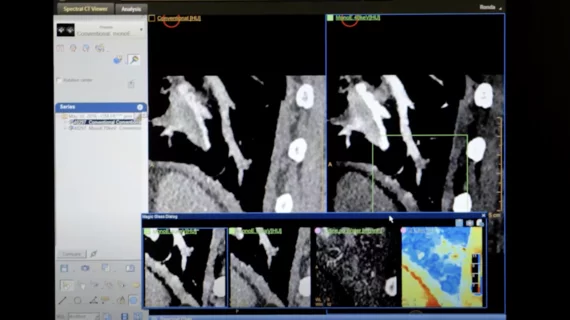Researchers 'concerned' CT angiography topped MRA in follow-ups for pulmonary embolism
Whether a patient received MR angiography (MRA) instead of CT angiography (CTA) for a pulmonary embolism (PE) had little effect on the rate of follow-up chest CT or MRI one year later.
Regardless, a majority of patients were given CTAs in subsequent exams, despite increased levels of measured radiation. Authors described these results as “concerning" in a study published online April 30 in the Journal of Academic Radiology.
“In this report of subsequent chest imaging utilization after an initially negative MRA or CTA for the evaluation of PE, we found no significant difference between groups at one year of follow-up,” wrote Michael D. Repplinger, MD, PhD, with the University of Wisconsin-Madison department of emergency medicine, and colleagues.
Authors found physicians preferred CTA over other tests because of its availability and short interpretation times. But authors noted the modality required a higher level of radiation exposure for patients. They hypothesized patients who initially underwent MRA would be more likely to seek follow-up imaging within a year due to a lack of radiation exposure.
This study included 430 emergency department (ED) patients with negative MRA results for PE, along with 287 CTA patients in an age and sex-matched cohort. Authors compared the one-year utilization of chest CT or MRI for both groups.
Results showed little difference between the MRA group in follow-up imaging (16.7 percent) and the CTA participants (15.3 percent).
However, they found follow-up MRAs were more common in patients who initially underwent an MRA, but follow-up CTAs were more common all-around (85 percent).
In addition to this, authors noted the mean radiation dose per patient at one year was “significantly” higher in the CTA cohort (9.82 mSv) compared to MRA (2.92 mSv), according to Repplinger et al.
“This was contrary to our working hypothesis; we initially suspected that a radiation-free imaging alternative to CTA, which incurs the same cost to patients, would lower the threshold for providers to order subsequent scans, specifically subsequent MRAs,” authors wrote.
The group attributed the findings partially to physician preference for CTA over MRA or a lack of awareness of MRA for the detection of PE at their institution.
“The subject of repeated CTA examinations for the evaluation of PE and resultant radiation exposure is concerning.” Repplinger et al. wrote. “These findings should be considered in the risk-benefit analysis of what scan to order for patients with possible PE.”

